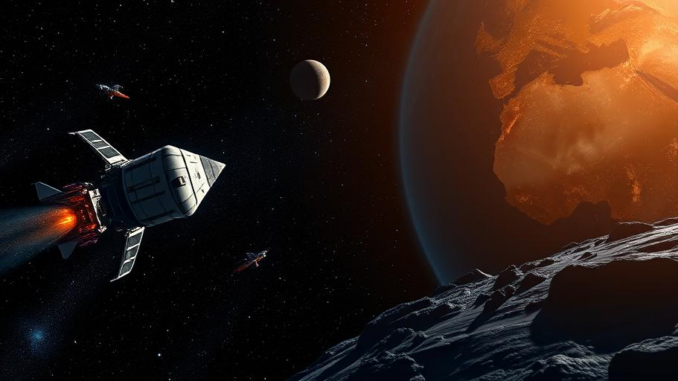
Summary
Crew-9’s return highlights the critical role of backup systems in space exploration. The mission’s success underscores the importance of redundancy and adaptability in ensuring mission completion. This article explores how backup technology facilitated Crew-9’s scientific endeavors and safe return.
Protect your data with the self-healing storage solution that technical experts trust.
** Main Story**
Crew-9 Returns: Backup’s Triumph
On March 18, 2025, NASA’s SpaceX Crew-9 splashed down off the coast of Florida, marking the end of their months-long stay aboard the International Space Station (ISS). The crew, comprising NASA astronauts Nick Hague, Suni Williams, Butch Wilmore, and Roscosmos cosmonaut Aleksandr Gorbunov, conducted cutting-edge scientific research sponsored by the ISS National Lab. Their mission, however, highlighted a crucial aspect of space exploration often overlooked: the vital role of backup systems. Crew-9’s journey itself became a testament to the importance of backup plans when unforeseen circumstances necessitate a change of course.
Adaptability in Action: Crew-9’s Formation
Initially, Williams and Wilmore launched on Boeing’s Starliner spacecraft for a test flight. However, the uncrewed return of Starliner led to their integration into Crew-9, showcasing the adaptability inherent in space missions. This last-minute adjustment underscored the need for flexible crew assignments and the importance of having backup transportation options available. The seamless transition of Williams and Wilmore to Crew-9 demonstrated the robust nature of the backup procedures and crew training protocols.
Scientific Triumphs Aboard the ISS
The Crew-9 astronauts dedicated over 900 hours to research, conducting more than 150 experiments. Their work spanned a variety of fields, including plant growth in microgravity, stem cell research, and the study of microorganism survivability in the harsh environment of space.
Pushing the Boundaries of Therapeutics
One of the most significant contributions of Crew-9 involves advancing the development of new therapeutics. They conducted experiments on protein crystallization in microgravity, potentially leading to the creation of more effective medications. The microgravity environment allows for the growth of larger, more uniform crystals, offering insights into protein structure and function that are impossible to achieve on Earth. This research could revolutionize drug development for a wide range of diseases.
Neurodegenerative Disease Research
Crew-9 also supported research on a promising new drug for neurodegenerative conditions like Alzheimer’s, Parkinson’s, and dementia. Using brain organoids in microgravity, the astronauts tested the drug’s effectiveness, offering a unique platform for drug discovery and development. The microgravity environment of the ISS provides a unique environment for studying the effects of drugs on these organoids, potentially accelerating the development of effective treatments for these debilitating diseases.
Inspiring the Next Generation
Beyond their scientific contributions, Crew-9 fostered educational outreach. They participated in ham radio events with students worldwide and oversaw a student-designed genetic experiment. These interactions emphasized the importance of STEM education and inspired future generations of scientists and engineers.
The Importance of Backup Systems
Crew-9’s mission exemplifies the significance of backup systems in space exploration. Redundancy in spacecraft, crew assignments, and experimental procedures ensures mission success even with unforeseen challenges. Backup systems aren’t simply contingency plans; they are integral components that enable flexibility and enhance the scientific output of space missions.
Looking Ahead
The Crew-9 mission, born out of a change in plans and propelled by the spirit of scientific discovery, successfully demonstrated the importance of backups. The astronauts returned to Earth with invaluable data and samples, leaving behind a legacy of scientific achievement. Their mission is a stark reminder that in the unpredictable environment of space, backups aren’t just optional—they’re essential. As we continue to push the boundaries of space exploration, investments in robust, reliable backup systems will remain a cornerstone of mission success, allowing for adaptability, resilience, and continued breakthroughs in space-based research. As of April 2, 2025, the information provided here is accurate and reflects the latest updates on the Crew-9 mission.


The seamless integration of Williams and Wilmore into Crew-9 highlights the value of cross-training in space missions. Investing in diverse skill sets ensures that astronauts are prepared for a wider range of tasks, optimizing the crew’s adaptability and problem-solving capabilities in unexpected situations.